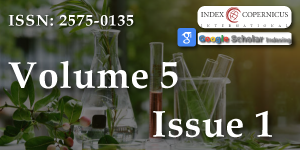Alternative method for the transformation of Capsicum species
Main Article Content
Abstract
Capsicum (pepper) species have high economic values as vegetable crops and medicinal plants. Most of the Capsicum is known to be recalcitrant to plant regeneration in vitro, and to genetic transformation with Agrobacterium tumefaciens. However, genetic improvement against pathogens requires discovering new pest resistance genes and revealing their functions and mechanism in vitro. The development of improved transformation methods serves this purpose, which needs a binary vector technology carrying the gene of interest to be transferred into the host plants. Agrobacterium rhizogenes mediated transformation serves as a useful alternative way for the Capsicum transformation. The A. rhizogenes transformation compared to the A. tumefaciens transformation has the advantage that the method needs no regeneration step in vitro.
Our goal is to obtain a highly efficient transformation system that can be used to study the functions of different genes in Capsicum annuum varieties. Our study’s further goal is to validate and describe the candidate gene (Me1) involved in resistance against root-knot nematode species.
Article Details
Copyright (c) 2021 Toth M, et al.

This work is licensed under a Creative Commons Attribution 4.0 International License.
The Journal of Plant Science and Phytopathology is committed in making it easier for people to share and build upon the work of others while maintaining consistency with the rules of copyright. In order to use the Open Access paradigm to the maximum extent in true terms as free of charge online access along with usage right, we grant usage rights through the use of specific Creative Commons license.
License: Copyright © 2017 - 2025 |  Open Access by Journal of Plant Science and Phytopathology is licensed under a Creative Commons Attribution 4.0 International License. Based on a work at Heighten Science Publications Inc.
Open Access by Journal of Plant Science and Phytopathology is licensed under a Creative Commons Attribution 4.0 International License. Based on a work at Heighten Science Publications Inc.
With this license, the authors are allowed that after publishing with the journal, they can share their research by posting a free draft copy of their article to any repository or website.
Compliance 'CC BY' license helps in:
| Permission to read and download | ✓ |
| Permission to display in a repository | ✓ |
| Permission to translate | ✓ |
| Commercial uses of manuscript | ✓ |
'CC' stands for Creative Commons license. 'BY' symbolizes that users have provided attribution to the creator that the published manuscripts can be used or shared. This license allows for redistribution, commercial and non-commercial, as long as it is passed along unchanged and in whole, with credit to the author.
Please take in notification that Creative Commons user licenses are non-revocable. We recommend authors to check if their funding body requires a specific license.
Hasan MJ, Kulsum MU, Ullah MZ, Hossain MM, Mahmud ME. Genetic diversity of some chili (Capsicum annuum L.) genotypes. Int J Agric Res Innovat Technol. 2014; 4: 32-35.
Wolf D, Matzevitch T, Steinitz B, Zelcer A. Why is it difficult to obtain transgenic pepper plants? Acta Horticulturae. 2001; 560: 229-233.
Li D, Zhao K, Xie B, Zhang B, Luo K. Establishment of a highly efficient transformation system for pepper (Capsicum annuum L.). Plant Cell Rep. 2003; 21: 785-788.
Steinitz B, Wolf D, Matzevitch-Josef T, Zelcer A. Regeneration in vitro and genetic transformation of pepper (Capsicum spp.): The current state of art. Capsicum and Eggplant Newsletter.1999; 18: 9-15.
Setamam N Md, Sidik NJ, Rahman ZA, Zai CRCM. Induction of hairy roots by various strains of Agrobacterium rhizogenes in different types of Capsicum species explants. BMC Res Notes. 2014; 7: 1–8. PubMed: https://pubmed.ncbi.nlm.nih.gov/24981787/
Desmet S, Dhooghe E, De Keyser E, Quataert P, Eeckhaut T, et al. Segregation of rol genes in two generations of Sinningia speciosa engineered through wild type Rhizobium rhizogenes. Front Plant Sci. 2020; 11: 859. https://www.ncbi.nlm.nih.gov/pmc/articles/PMC7333734/
De Paolis A, Frugis G, Giannino D, Iannelli MA, Mele G, et al. Cellular and molecular biotechnology: Following Mariotti’s steps. Plants (Basel). 2019; 8: 18. PubMed: https://www.ncbi.nlm.nih.gov/pmc/articles/PMC6359066/
Trudgill DL. Resistance to and tolerance of plant parasitic nematodes in plants. Annual Review of Phytopathology. 1991; 29: 167–l 93.
Jones JT, Haegeman A, Danchın EGJ, Gaur HS, Helder J, et al. Top 10 plant parasitic nematodes in molecular plant pathology. Mol Plant Pathol. 2013; 14: 946–961 PubMed: https://pubmed.ncbi.nlm.nih.gov/23809086/
Bird AF. The ultrastructure and histochemistry of a nematode-induced giant-cell. J Biophys Biochem Cytol. 1961; 11: 701–715. PubMed: https://pubmed.ncbi.nlm.nih.gov/13869341/
Reddy KR, Hodges HF. (Eds.). Climate change and global crop productivity. Biologia Plantarum. 2000; 43. CABI.
Djian-Caporalino C, Fazari A, Arguel MJ, Vernie T, Casteele CV, et al. Root-knot nematode (Meloidogyne spp.) Me resistance genes in pepper (Capsicum annuum L.) are clustered on the P9 chromosome. Theor Appl Genet. 2007; 114: 473–486.
Murashige T, Skoog F. A revised medium for rapid growth and bio assays with tobacco tissue cultures. Physiol Plant. 1962; 15: 473–449.
Aarrouf J, Castro-Quezada P, Mallard S, Caromel B, Lizzi Y, et al. Agrobacterium rhizogenes-dependent production of transformed roots from foliar explants of pepper (Capsicum annuum): a new and efficient tool for functional analysis of genes. Plant Cell Rep. 2012; 31: 391-401. PubMed: https://pubmed.ncbi.nlm.nih.gov/22016085/

